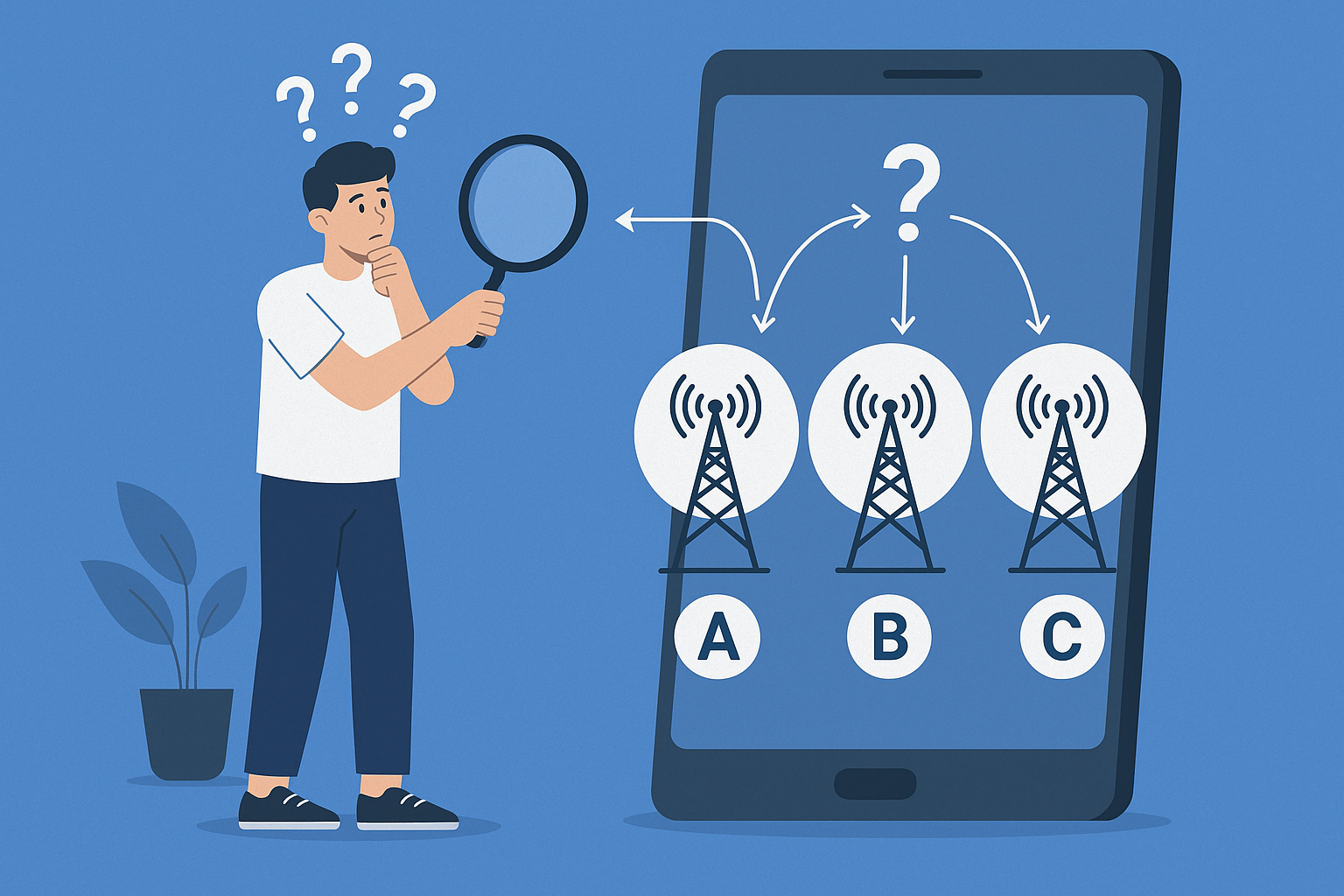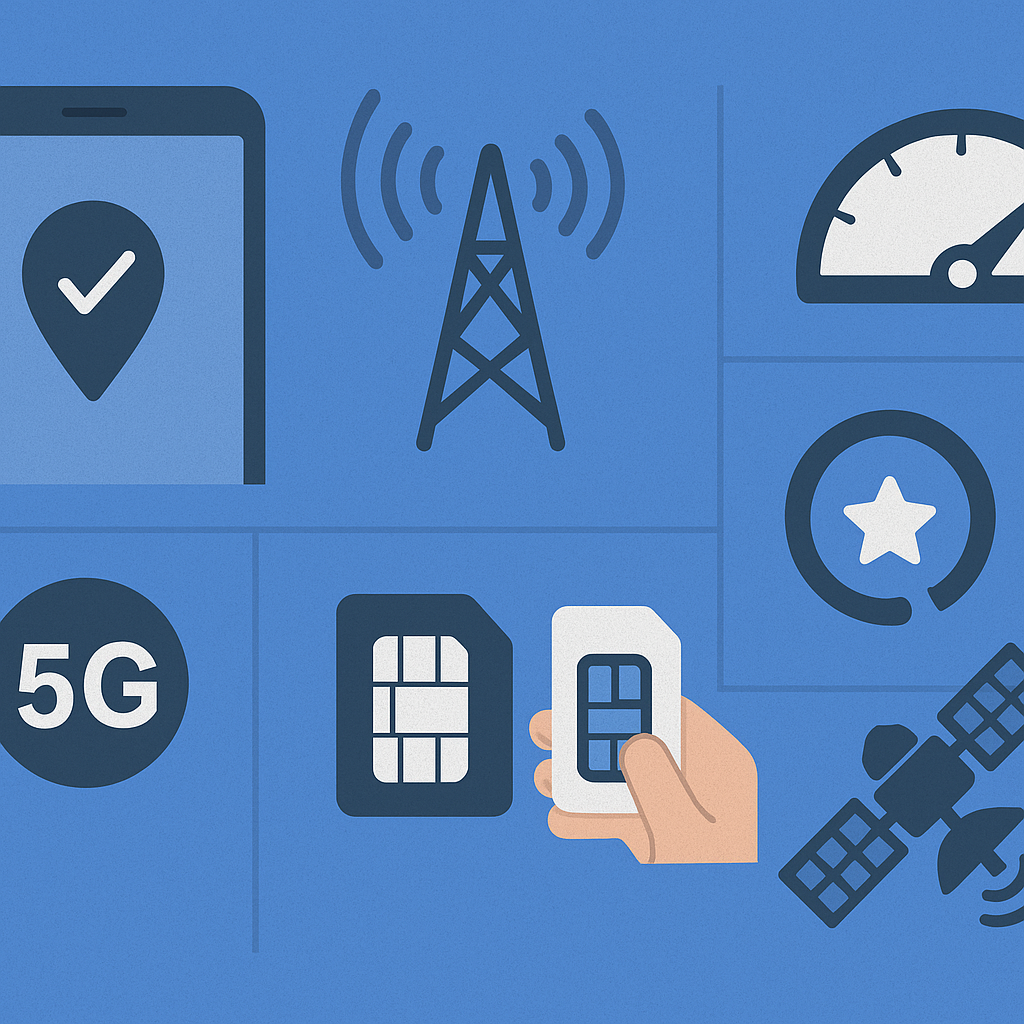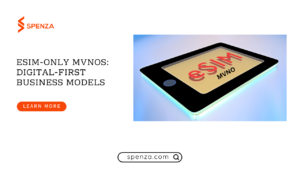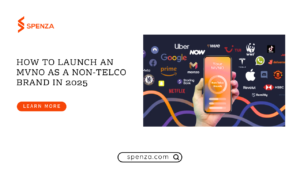Table of Contents
- Introduction
- How to Choose the Right Network for Your MVNO
- Why to Choose the Right Network
- Network Access Priority: The Hidden Cost of Wholesale
- Cost Efficiency vs. Service Trade-offs
- Subscriber Base and Business Opportunity
- Technical Backend and Network APIs
- Customer Experience and Branding Limits
- Pricing & Data Prioritization
- How Spenza Makes MVNO Launch Simple
- Final Thoughts
- FAQs

Introduction
Choosing the right network is the first and most important step when you start an MVNO business. Business owners, especially those dealing with IoT deployment and telecom cost management, often face a tough choice between two of the largest wireless carriers in the U.S.: AT&T and Verizon. Both offer wholesale access to their networks, but each comes with distinct pros and cons.
This blog focuses on the AT&T vs Verizon MVNO business question. If you’re unsure where to start, this step-by-step guide on launching an MVNO with Spenza breaks it down clearly for new operators.
How to Choose the Right Network for Your MVNO
Choosing the right host network for your MVNO isn’t just about picking the biggest brand. It’s about matching network strengths to your target audience, business model, and growth plans.
You need to balance cost, coverage, performance, and technical flexibility. If you’re launching a brand MVNO or operating a full-stack model, your network partner directly impacts service quality and customer retention.
Here are three key areas to consider:
1. Understand Your Customer Base
Start with geography. If your customers are mostly in rural regions, AT&T’s broader footprint might give them better service. For city-based users needing fast speeds, Verizon’s dense urban infrastructure could make more sense. Always map where your subscribers live and work before you pick.
2. Check the Technical Integration Options
Your MVNO’s backend will rely heavily on APIs and provisioning tools. AT&T offers flexible integrations, great for teams with developers. Verizon has more rigid systems but provides stability. If you’re building a custom portal or mobile app, make sure the network’s tech tools won’t slow you down.
3. Compare Pricing and Data Policies
Low prices attract users, but make sure you understand the fine print. Some networks throttle MVNO users during peak times. Others offer cheaper data but cap speed. Also, ask about volume discounts and if they apply as you scale. Data prioritization policies vary, and they matter a lot for customer experience.
Why to Choose the Right Network

Picking the wrong host network can hurt your brand, upset your users, and drain your profits. It’s not just about signal bars, it’s about how the whole system performs under load and how much control you really have. Here’s what to think through before you sign that MVNO agreement:
- Coverage quality matters more than brand name. Go where your customers live, not where the ads shout loudest.
- Look at 5G reach if your users rely on high-speed data. Not all 5G is created equal.
- Check if the network throttles wholesale users first. Your customers will feel it immediately.
- Review how easy it is to activate new SIMs, port numbers, and manage accounts. That affects your support cost.
- Ask how much branding freedom you have. Can you fully own the customer relationship?
- Understand if the provider supports future tech like satellite backup, IoT SIM management, or eSIM rollout.
Network Access Priority: The Hidden Cost of Wholesale
It’s easy to assume that using the same network as direct consumers guarantees the same quality. But it doesn’t. MVNO users operate on the wholesale side of the network. That means data speeds, congestion handling, and customer support differ.
Verizon and AT&T both prioritize their postpaid users when traffic spikes. Your MVNO subscribers, being on the wholesale side, take a secondary position. That often means slower data or dropped packets when a tower is full. For example, users may have excellent voice service but experience throttling during high-usage periods.
For MVNO business strategy planning, this network access tier is a big deal. It affects customer satisfaction and churn rates.
Cost Efficiency vs. Service Trade-offs
The main reason many operators choose the MVNO model is cost. But lower prices come with trade-offs. Direct carrier plans are expensive because they offer full-speed, priority access to towers. MVNO users often face speed caps and lower customer service tiers.
Your pricing strategy must reflect these trade-offs. If you offer premium prices, you better back it up with quality. That includes explaining to customers what they get—and what they don’t. Transparency builds trust.
Also, most MVNO carriers operate as prepaid services. Your customers pay upfront. That changes how you manage churn, refunds, and support.
Budgeting is key before signing any host carrier deal. Here’s how much it really costs to launch an MVNO according to Spenza.
Comparison of AT&T vs Verizon MVNO Business Factors
| Feature | AT&T Wholesale Network | Verizon Wholesale Network |
|---|---|---|
| 5G Coverage (2024) | ~290 million people | ~230 million people |
| International Roaming | Limited for MVNOs | Limited for MVNOs |
| Priority Data Access | Lower than postpaid | Lower than postpaid |
| Satellite Expansion | $155 M in AST SpaceMobile | No comparable public investment |
| MVNO Support Tools | Solid backend with API support | Slightly more closed ecosystem |
| Pricing Flexibility | Better for volume MVNOs | More rigid pricing tiers |
This comparison helps with your MVNO host network comparison decision.
Subscriber Base and Business Opportunity
Let’s talk numbers. As of 2024, MVNOs held about 10% of the U.S. wireless market. That equals around 34 million subscribers. The segment is growing, especially with cable companies entering the space with their MVNO brands.
This is the right time to enter or scale in the MVNO space. Whether you’re evaluating the best network for MVNO or planning an MVNO carrier partnership, both AT&T and Verizon have systems that support fast onboarding.
AT&T works better for those aiming for suburban and rural demographics. Verizon may be better suited for urban markets with dense usage and shorter latency needs.
Technical Backend and Network APIs
When you launch your MVNO business, integration with the host carrier’s backend is crucial. AT&T offers a flexible API stack. That makes activation, billing, and troubleshooting easier to automate. Verizon’s APIs are reliable but more rigid, often requiring tighter compliance processes.
Technical compatibility matters. If you plan to build a branded MVNO with unique app experiences, look at API options before finalizing your MVNO carrier partnership.
Also, AT&T is more open to hybrid deals where you may co-brand while maintaining independence. Verizon tends to prefer tight control over brand and experience.
It’s important to know whether a Full or Light MVNO suits your model. This MVNO types guide by Spenza simplifies the difference.
Customer Experience and Branding Limits
Your customers won’t always know or care that you’re an MVNO. But the quality of service and support they receive will reflect on your brand. When you’re stuck under the constraints of a carrier that limits branding or customer service policies, your hands are tied.
AT&T has a broader approach to partner branding. That helps full MVNOs who want end-to-end control. Verizon can be stricter about brand use and customer policies.
This matters for your MVNO business strategy. You’ll need to decide how much control you want—and how much risk you’re willing to take.
Spenza helps companies simplify their telecom operations, making it easy to manage both full and brand MVNO models.
If you’re still confused between being a full operator or a virtual one, this MNO vs MVNO breakdown clears up the technical and business distinctions.
Pricing & Data Prioritization
Pricing makes or breaks your MVNO offering. Verizon MVNOs bring access to one of the strongest networks, and some of them offer great pricing too. Visible, a Verizon-owned brand, offers unlimited data plans starting as low as $25 per month. These rates attract cost-sensitive users while still offering decent network quality.
AT&T MVNOs also provide competitive pricing. Their plans usually come with broader geographic coverage, especially in the South and Midwest. However, data prioritization becomes a real issue during congestion. Not all plans are treated equally, and MVNO users may face slow speeds when postpaid traffic surges.
When you pick your MVNO host, don’t just look at price points. Study the fine print around throttling, deprioritization, and fair usage caps. Many businesses ignore this step and pay the price with high churn.
How Spenza Makes MVNO Launch Simple
Building and running an MVNO is complex, but it doesn’t have to be. Spenza gives you all the tools you need in one place, whether you’re launching a Full MVNO, Branded Reseller, or anything in between. We help you manage setup, operations, billing, and user experience without drowning in carrier-level complexity.
Spenza is an authorized reseller for AT&T, Verizon, T-Mobile, and several leading IoT and MVNO operators across the globe. That means we’ve already done the groundwork so you don’t have to. Our team supports dozens of companies in launching, scaling, and optimizing their MVNO business.
If you’re unsure about your business case or profitability, start with our MVNO Calculator to see how your numbers stack up.
Ready to talk strategy? Schedule a time with our connectivity experts and we’ll help you map out every detail.
Final Thoughts
If you’re serious about entering the U.S. MVNO market, your network choice makes or breaks your business. If you’re picking AT&T or Verizon as your host network, the decision impacts everything, coverage, user experience, cost control, and operational flexibility.
In the AT&T vs Verizon MVNO business comparison, neither is perfect. But your business model, technical team, and go-to-market strategy can help you choose the better fit.
FAQs
You’ll need to sign a wholesale agreement, get regulatory approval, and set up backend integration with one of the carriers.
AT&T offers broader rural coverage and now has satellite expansion plans underway.
Yes, but access is secondary. That means during congestion, speeds may slow down.
Spenza helps companies become an MVNO within days and enables them to offer connectivity services to their customers, creating an additional revenue stream. To know more, check: How to launch a MVNO with Spenza
Costs range widely but expect $500K to $2M depending on scale, tech stack, and customer support setup.
MVNO users get deprioritized. Direct carrier customers get first access to bandwidth.
Want expert advice on which network fits your MVNO business strategy? Then consult Spenza today.



